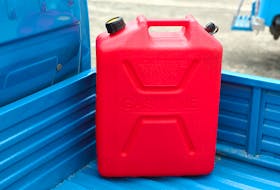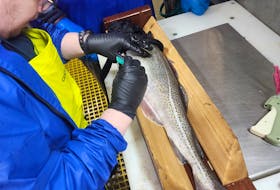CLARENVILLE, N.L. — Nearly three years of studies, tender calls, funding applications— even a debate over who owns it— and a bridge on Route 230 through Clarenville is still not fixed.
Earlier this month, Clarenville town council adopted a motion to apply for funding under the Investing in Canada Infrastructure Program, hoping it might be able to get most of the cost of the $3.9 million project covered by the feds and the province.
If you think that sounds familiar, you’d be right.
Last year the town made a similar application, but decided it couldn't afford its one-third share.
Mayor Frazer Russell said that with Ottawa rolling out more money to support towns and citizens through the pandemic, they might get a better deal.
“We’re hoping for something more like an 80-20 share,” said Russell, which would bring the town’s cost to somewhere around $800,000.

If the federal program still requires one third of the cost to be paid by the town, Russell says the bridge repair will be a challenge
“We have only so much money (about $700,000 is budgeted annually for capital works) and we haven’t finished other listed projects.
One of those is widening Shoal Harbour Drive, another main thoroughfare through the town that's seen much more heavy traffic since the Shoal Harbour Causeway Bridge closed to bigger vehicles three years ag
The town has tried to argue, so far unsuccessfully, that the province really has the responsibility to fix the bridge, because it is a major link and part of Route 230 that takes traffic from the Trans Canada Highway to the Bonavista Peninsula.
A government-town funding partnership may be the only option.
Taking on more debt, though, is a financial balancing act for this small town (population 6,291) especially given the impact COVID has had on local businesses and citizens.
The town’s debt-service ratio is about 19 percent, Russell said.
That means for every $100 the town collects in revenue, $19 is paid on loans and interest.
“When you get past 23 percent (debt to service ratio) that’s not a good place to be,” he said.
The provincial government suggests a debt threshold of 30 percent for municipalities.
In the past couple of years the town has borrowed a few million dollars, building a $2.3 million fire hall last year, starting a $2.3 million renovation of the town hall this year and completing $2.7 million worth of water and sewer upgrades.

“Right now it’s hard to take on additional debt,” Russell said
Business and residential growth has slowed considerably over the past couple of years, and COVID has affected many.
The shutdown of the Come By Chance refinery, the drop in tourism and the pandemic-induced restrictions and closures of some businesses mean the town’s business tax base is stagnant.
Some businesses have closed snd a couple of strip malls that have been awaiting tenants are still partially empty.
It’s the same on the residential side.
The heyday of housing starts appears to have ended. From 2010 to 2015 the town was issuing permits for an average of 50 houses per year.
The cool down began in 2017, with just a half dozen or so permits issued.
This year, construction of single family homes has been practically non-existent
The town knows it can’t depend on business and residential growth for more tax revenue.
And they realize they just can’t hoist taxes in a time when many are facing financial challenges due to COVID.
The challenge of drafting a budget for next year, said Russell, is to find reasonable balance between spending and saving.
“Our aim is to not put any additional strain or stress on our local businesses and residents,” said the Mayor.
“So we may have to look at trimming expenses; asking ourselves whether we delay projects of the purchase of equipment, those kinds of things.”
The town will deliver its 2021 budget on Dec. 15, revealing its financial picture for the new year, the tax rates for businesses and citizens and, perhaps, answering the question of whether or not this will be the year the bridge gets fixed.









